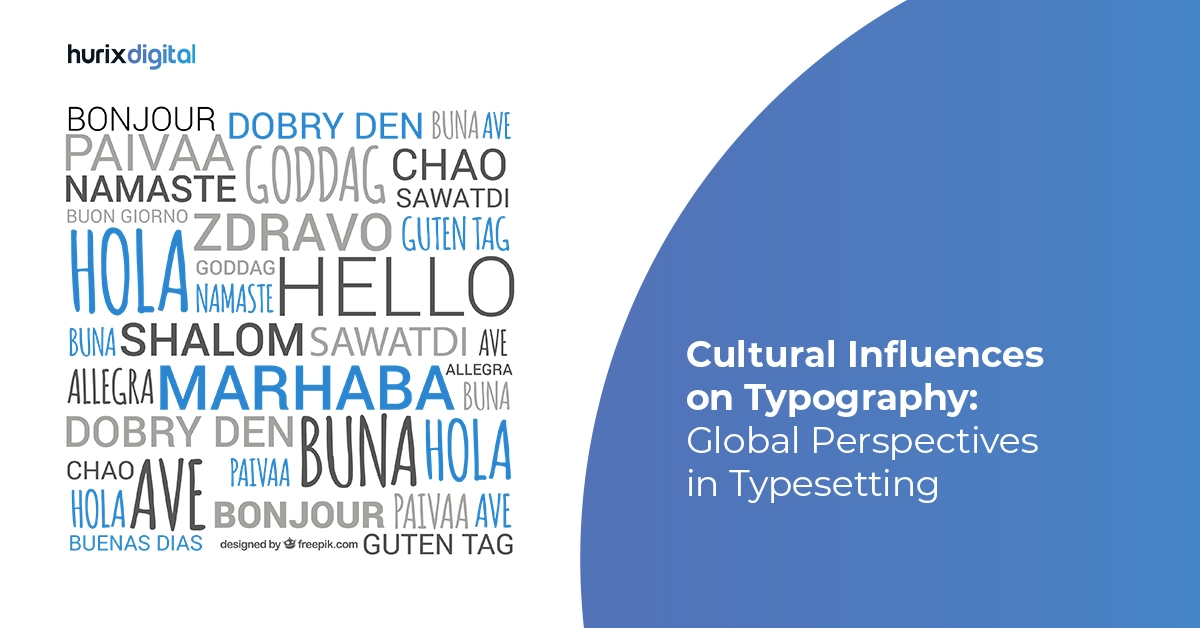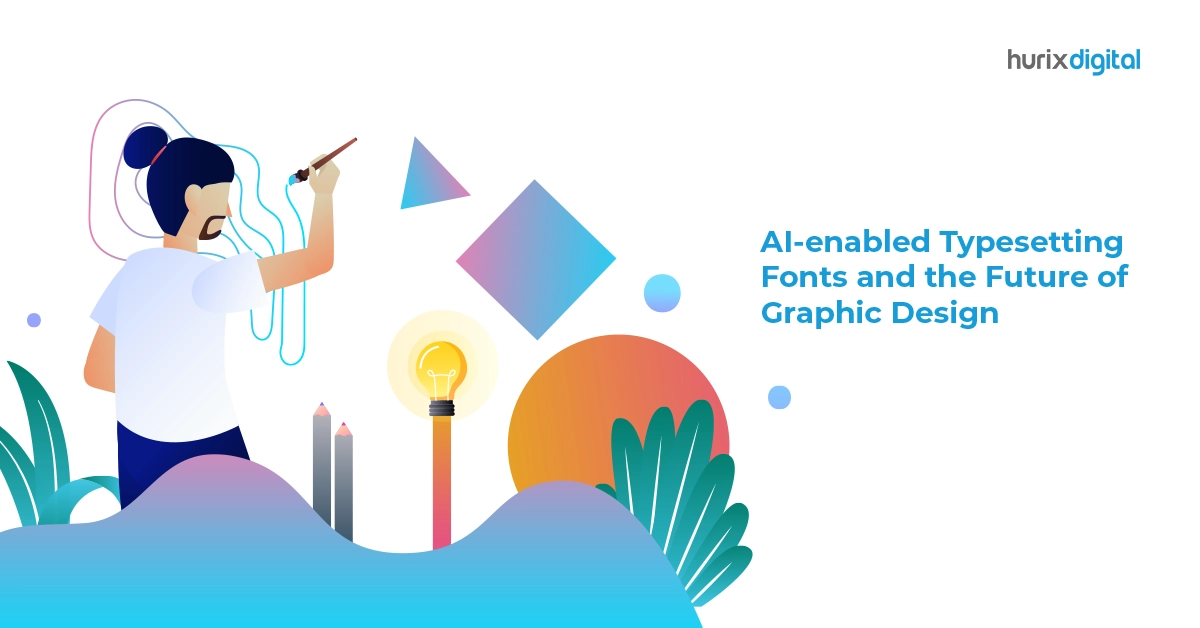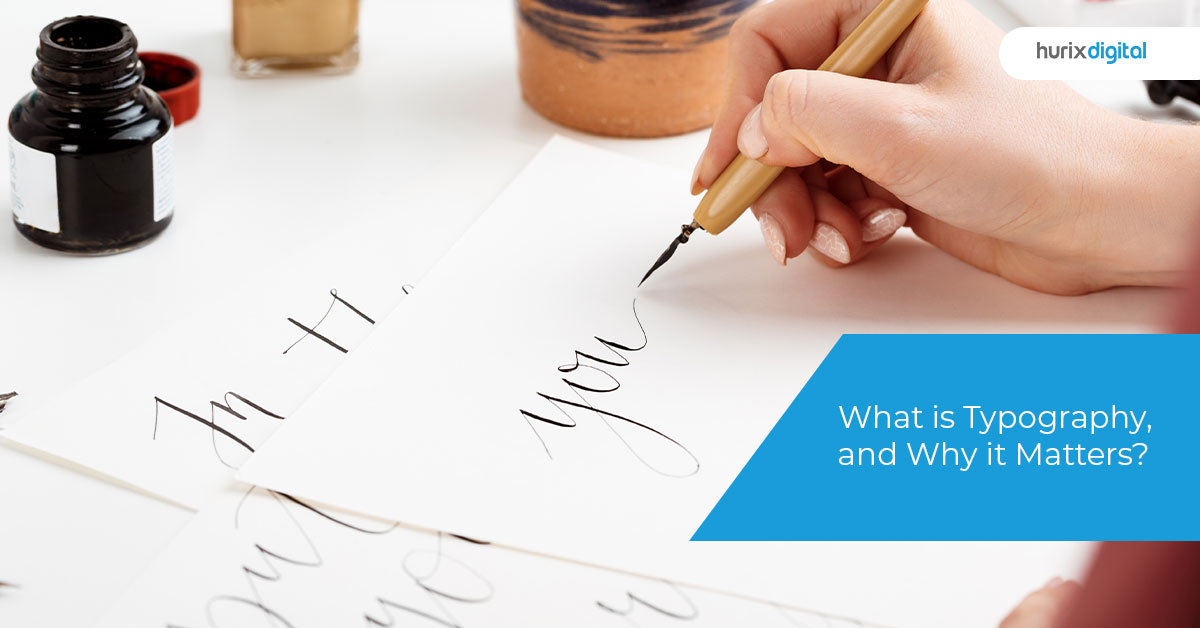
Cultural Influences on Typography: Global Perspectives in Typesetting
Summarize with:
The art of arranging type, more commonly known as typography, has come a long way from its more humble beginnings as a practical means for individuals to communicate with one another. Today, it’s far more dynamic and is a key aspect of visual design. In particular, cultural typography plays a vital role in reflecting regional identity, heritage, and audience connection through design.
Further, its influence spreads far beyond mere communication; it can help shape our perception of information, influence cultural identity, and can also serve as a canvas for creative expression across the world.
While it’s a visual concept in its purest form, it is also deeply rooted in the craft tradition, with carefully selected typefaces, immaculate attention to detail, and a deep understanding of letterforms being key hallmarks of this craftsmanship.
In this article, we take a look at four major global perspectives in cultural typography and how they influence the art of typography.
Table of Contents:
- Typography as a Visual Concept
- Typography as a Craft Tradition
- Typography in the Pursuit of Knowledge
- Typography as Being User-Centered
- In Conclusion
Typography as a Visual Concept
Typography, when looked at as a visual concept, serves various purposes, several of which play a huge role in building identities and the world of marketing.
For instance, it can be used to help make a concept visible, communicate emotions, tone, and manner, reach a specific demography with the choice of typography, differentiate one’s brand from that of their competitors, and a whole lot more.
This perspective of typography as a tool to elicit emotions in one’s audience is widely held among various professionals, including –
- Visual and graphic designers
- Creative directors
- Key stakeholders who work in the world of marketing, advertising, and more
The approach to typography in this perspective, often when considering the designer, is a lot more self-driven as opposed to when used as a tool in the craft tradition. The goal is to create something unique and innovative, with a designer’s ability to push the envelope being rewarded.
Many designers often use professional typesetting software to incorporate unique typefaces into their content. At its core, typography, when looked at as a visual concept, is used to create something new at every turn.
Also Read: How Typesetting is Different From Typography
Typography as a Craft Tradition
Classical typography has played a crucial role in the world of craft over the centuries.
In the West, it was primarily born out of letterpress printing, and typographers were trained through apprenticeship or in technical schools. Before the invention of the desktop, typesetting was mainly outsourced to a select few who had the technology available to bring this craft tradition into practice, such as book typesetters.
Today, however, this division of labor has largely disappeared, especially since the invention of the desktop and the subsequent introduction of fonts and digital typeface technology.
As a result, the typeface is no longer restricted to the print medium and is in widespread use digitally. Be it in the realm of book typesetting in publications or graphic design, the tradition of this craft has witnessed a steady shift since the 1990s.
Today, designers have the luxury of pushing the boundaries of digital typography with varying font and typographic styles, weights, sizes, and more while ensuring maximum readability and impact across devices. This is a necessity; small font sizes and low contrast is the primary complaint of users who access content online.
The objective here, unlike with the use of typesetting as a visual concept, is not to create something new and innovative but to create something good. This is done with the guidance of communities of practice and the traditions that typesetting represents in the modern world.
Typography in the Pursuit of Knowledge
Communication design and typography are practice-based disciplines.
Traditionally, these skills are passed down from the master to the pupil, and with modern technology, access to this information and knowledge is a lot more widespread. However, despite this revolution, typography remains a discipline that one can only master through practice.
Access to the history of typography and to various events that influenced it in the past is widespread today.
The internet offers designers a wealth of information to understand the social, political, economic, and cultural influences on typography over the centuries. It also offers the crucial context to create typography that’s tailored to today’s cultural climate across the world.
This wealth of information today is disseminated by a variety of avenues, from research conferences to academic journals, trade, and a whole lot more. Regardless of the medium, research plays a crucial role in today’s understanding of typography as we know it, with the focus of this research being that of finding the truth.
Typography as Being User-Centered
Last but not least, another perspective on typography is that of using it in a user-centered manner.
Digitally, the choice of typography used can have a major impact on accessibility while also arousing feelings of emotion. The goal is to ensure maximum effectiveness and performance, especially with competition in the digital world being a lot more cut-throat than it earlier was.
It also serves as a way of breaking cultural barriers worldwide. This user-centric approach to typography began with with the interaction of humans with computers, with usability, being a key influence. As a result, the psychological impact of typography also plays a crucial role in influencing the choice of typography and the manner it’s used.
Today, with a wealth of information available about user behavior and preferences, the choice of typography used is heavily backed by information rather than merely as a means of maintaining tradition.
Unlike the use of typography in visual design, the approach of the designer in a user-centered market is outward and empathetic to the end-user’s needs and preferences, making its use largely logical.
Also Read: What is Typography, and Why it Matters?
In Conclusion
The art of typography has witnessed a revolution ever since the ancient years when cave paintings were the first recorded accounts of any written communication whatsoever.
Today, typography plays a major role in every aspect of how we interact with the world around us. From improving accessibility to drawing the audience’s attention to one brand over another in the marketplace to even setting a tone and arousing emotions, typography today is a crucial aspect of any branding exercise.
With technology like AI-powered typesetting, this art is set to witness continuous modernization with time. Its ability to help build brand recognition is unparalleled, making it essential for businesses to consider when conducting any branding exercise.
For businesses that are looking to build their brands from scratch and make a place for themselves in today’s competitive marketplace, typography plays a major role. It requires a vast knowledge base, access to data, and the best typesetting software to ensure its effective use.
Hurix Digital has been a pioneering force in the world of visual design, animation, and video, and if you’re in the market for someone who can make the best use of visual design elements to build your brand identity from scratch, make sure to reach out to them for more information.
Hurix Digital’s approach incorporates a keen focus on typesetting services to ensure your brand has a distinct identity.
Summarize with:

Vice President – Content Transformation at HurixDigital, based in Chennai. With nearly 20 years in digital content, he leads large-scale transformation and accessibility initiatives. A frequent presenter (e.g., London Book Fair 2025), Gokulnath drives AI-powered publishing solutions and inclusive content strategies for global clients
 Upcoming Masterclass | Build an Army of Brand Evangelists using Training & Development | November 20th, 8:30 AM PDT | 11:30 AM EDT | 10:00 PM IST
Upcoming Masterclass | Build an Army of Brand Evangelists using Training & Development | November 20th, 8:30 AM PDT | 11:30 AM EDT | 10:00 PM IST




